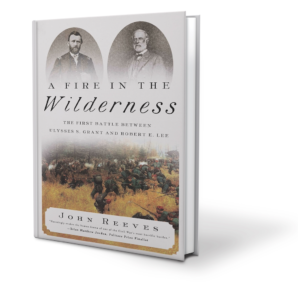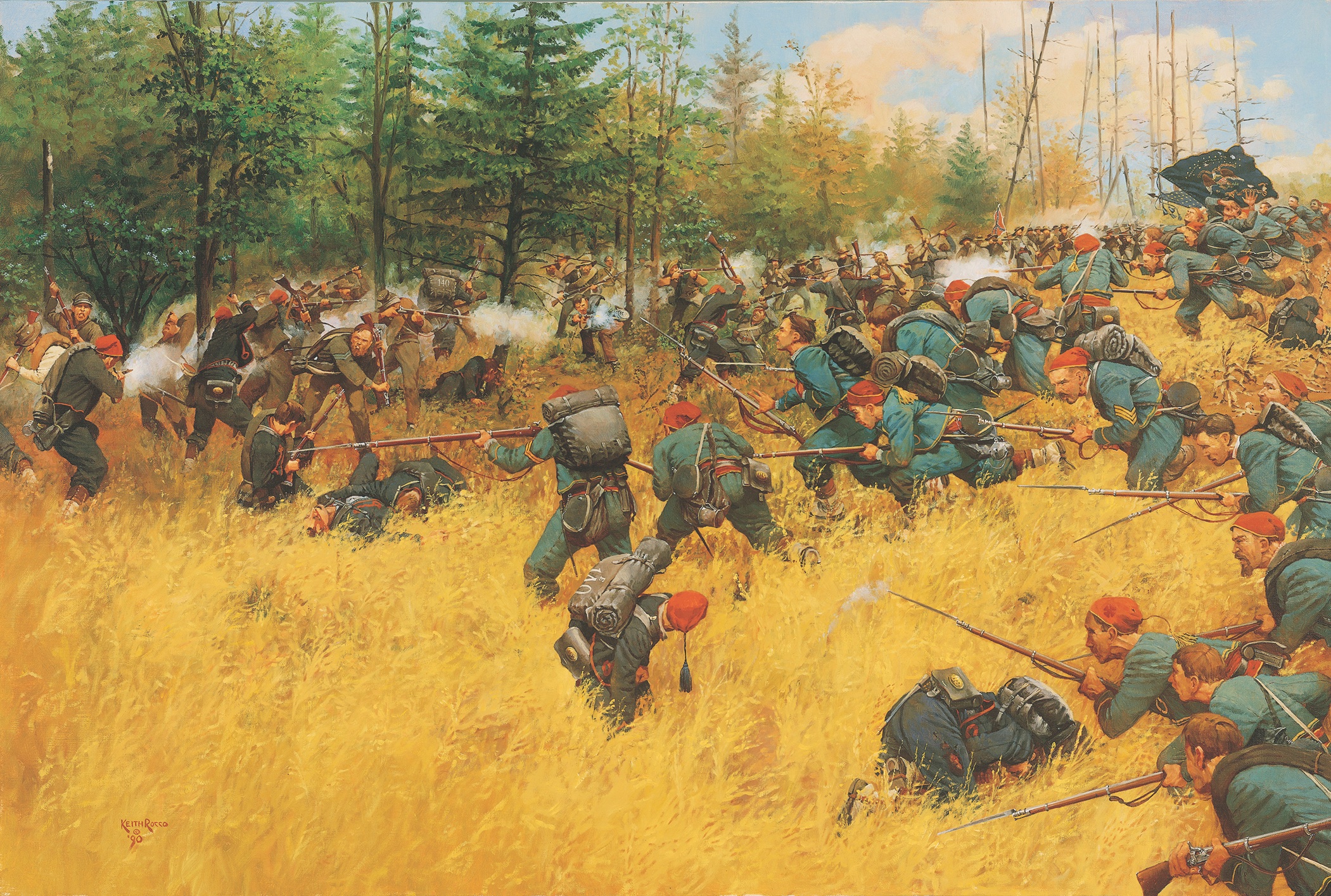The Army of the Potomac’s passage across the Rapidan River in early May 1864 promised the first battlefield confrontation between Ulysses S. Grant and Robert E. Lee. The stakes could scarcely have been higher: a Union defeat might well lead to an armistice and defeat for Abraham Lincoln in the fall presidential elections.
A Fire in the Wilderness offers a compelling narrative of the Overland Campaign’s first clash of arms, characterized by one Union officer as “a useless battle, fought with great loss and no result.” Federal casualties, more than one and half times greater than Confederate losses, offered numbing proof of Grant’s plan “to hammer continuously at the Armed forces of the enemy…until by mere attrition…there should be nothing left to him but…submission.”
Reeves skillfully deploys first-person accounts of the frightfully brutal battle. A year earlier, much of the fighting during the Chancellorsville Campaign had been at close quarters in the a dense second-growth forest of the Wilderness. Lee knew that confronting Grant here would neutralize the Union’s advantages of men and matériel.
The fighting on May 5, Reeves argues, proved Lee’s prescience. Union troops, many of them inexperienced replacements, were thrust into battle in piecemeal fashion, suffering heavy casualties and too often retreating chaotically. Reeves attributes this counterproductive strategy to a high command plagued by friction between Grant and Maj. Gen. George Gordon Meade, and the resulting poor communications with their subordinates.
Reeves clearly faults Grant, but relies on the general’s contemporaries to make his case. “It was the beginning,” wrote a Union staff officer years later, “of a reckless…way of fighting battles by hurrying into action one division, one brigade, or even a single regiment at a time, which characterized every contest from the crossing of the Rapidan to the battle at Cold Harbor.”
Despite the first day’s lost opportunities for the Federals, Reeves suggests, “There was something remorseless even in Grant’s mistakes.” The overnight hours offered horrific fires in the heavy underbrush that killed wounded soldiers unable to flee.

By John Reeves
Pegasus Books, 2021, $28.95
By May 6, Reeves believes Lee had begun to fear he had underestimated Grant’s relentlessness, and momentarily betrayed his desperation by recklessly deciding to lead a charge by Texas troops. Only the intercession of his junior officers kept the general from risking his life. The wounding of James Longstreet somewhat fortuitously blunted a Confederate frontal attack that “ought never, never have been made,” one of Lee’s most loyal staff officers critically noted. “It was wasting good soldiers whom we could not spare.”
On May 7, rather than continue to attack entrenched Confederate forces in the Wilderness, Grant sought to outmaneuver Lee with a night march to Spotsylvania Court House designed to position his forces between the Rebel army and Richmond, however. The attempt failed: Lee’s army arrived there first, and on May 12 one of the war’s costliest battles—the Bloody Angle—ensued.
Throughout his book, Reeves utilizes personal experiences to great effect; the fall from grace of Maj. Gen. Gouverneur K. Warren, the hero of Little Round Top, is especially engaging. Although the inclusion of maps in the text would clarify a confusing fight, their absence detracts very little from an exciting, well-written account of the first clash between Grant and Lee.
[hr]
*Thank you for visiting historynet.com. If you buy something through our site, we might earn a commission.





